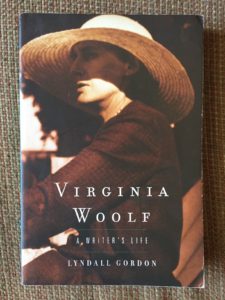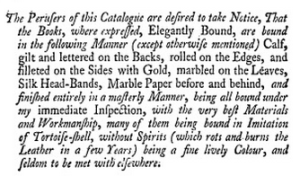That categorizing should even exist in a hypertext, online encyclopedia is worthy of more study (this proposition will make a lit review of wikipedia and knowledge organization inevitable, of course).
When added to the articles on individuals, the Wikipedia categories, found at the very bottom of the foot of the page, begin to act as tokens of culturally constructed classification that may or may not be warranted by the life or personality of the person in question. Even more, they may not be warranted by the way most people hope to find new information. Some of them may even be said to be marks of ownership. Below are the categories to which Leonard Woolf’s article has been assigned by (presumably) various wikipedians. It is interesting that not only is “Bloomsbury Group” a category, so is “Virginia Woolf.” These are categories that both arise from the subects themselves, and provide more insight into their place in culture and history, if applied well to all relevant articles. But there there are things like birth year and death year, categories so large that the discovery of meaningful connections is not the point – making the list, I think, must be the point. And I really don’t know what to make of the Sri Lankan categories, and I am too tired and timid at the moment to peek into the talk pages.  [Note – I have since learned enough to guess that LW made a good impression as a colonial officer, and is being honored by this inclusion].
Categories that could be applied, if they exist, would include British / English / Jewish printers, British / English / Jewish publishers, Cambridge Apostles, Members of the 1917 Club, People Who Lived in Sussex, People Who Lived in London, and so on. This line of thought highlights the category of Jewish Socialists, with its disturbing suggestion of a lurking anti-semitism, and indeed, if other categories of socialist are left out (Fabians notwithstanding), it seems to me to give the list an accidental and unnecessary anti-semitic tinge. I suspect as well that members of some groups and clubs get lists in Wikipedia, which is where you’d put Apostles and the 1917 Club, while a less formal movement like the BG becomes a category. Just to experiment with a potential career as a categorizer, I have since added “English publishers (people).” It seemed too big an omission to leave unfilled. And where does it stop? If Virginia Woolf is herself a category, why not the Hogarth Press? It feels like a struggle to define correctly more than to inform, to insist that Leonard Woolf means this as well as that, and to continue the work of biography that belongs properly to the (hyper)text of the article per se.
Categories (as of April 2, 2017):
1880 births
1969 deaths
Bloomsbury Group
English Jews
English memoirists
English writers
Stephen-Bell family
British Jewish writers
People educated at St Paul’s School, London
Alumni of Trinity College, Cambridge
Members of the Fabian Society
British Jews
Jewish socialists
British civil servants in Ceylon
Sri Lankan Jews
Sri Lankan people of English descent
20th-century English novelists
Virginia Woolf
Postscript: I have since found a quotation from Edmund Gosse, cited in Anne Olivier Bell’s introduction to VW’s diairies (Bell is overdue for a wikipedia article of her own, category: English centegenarian art historians and editors). Gosse categorizes Leonard Woolf in 1924 from a very non-neutral point of view: “…a perverse, partially educated alien German, who has thrown in his lot violently with Bolshevism and Mr. Joyce’s ‘Ulysses’…” It is quoted to indicate the difficulty that VW’s father’s literary friends had with the new, post-impressionist world being built up by her and her circle. Post-impressionist, oddly, was never picked up (beyond art) to cover Bloomsbury and other movements. Indeed, Bloomsbury could be meant to signify the combination of letters and art that was modernist on paper and post-impressionist on canvas, with cross-pollination, as VW’s recorded thoughts on Cézanne’s influence testify.




